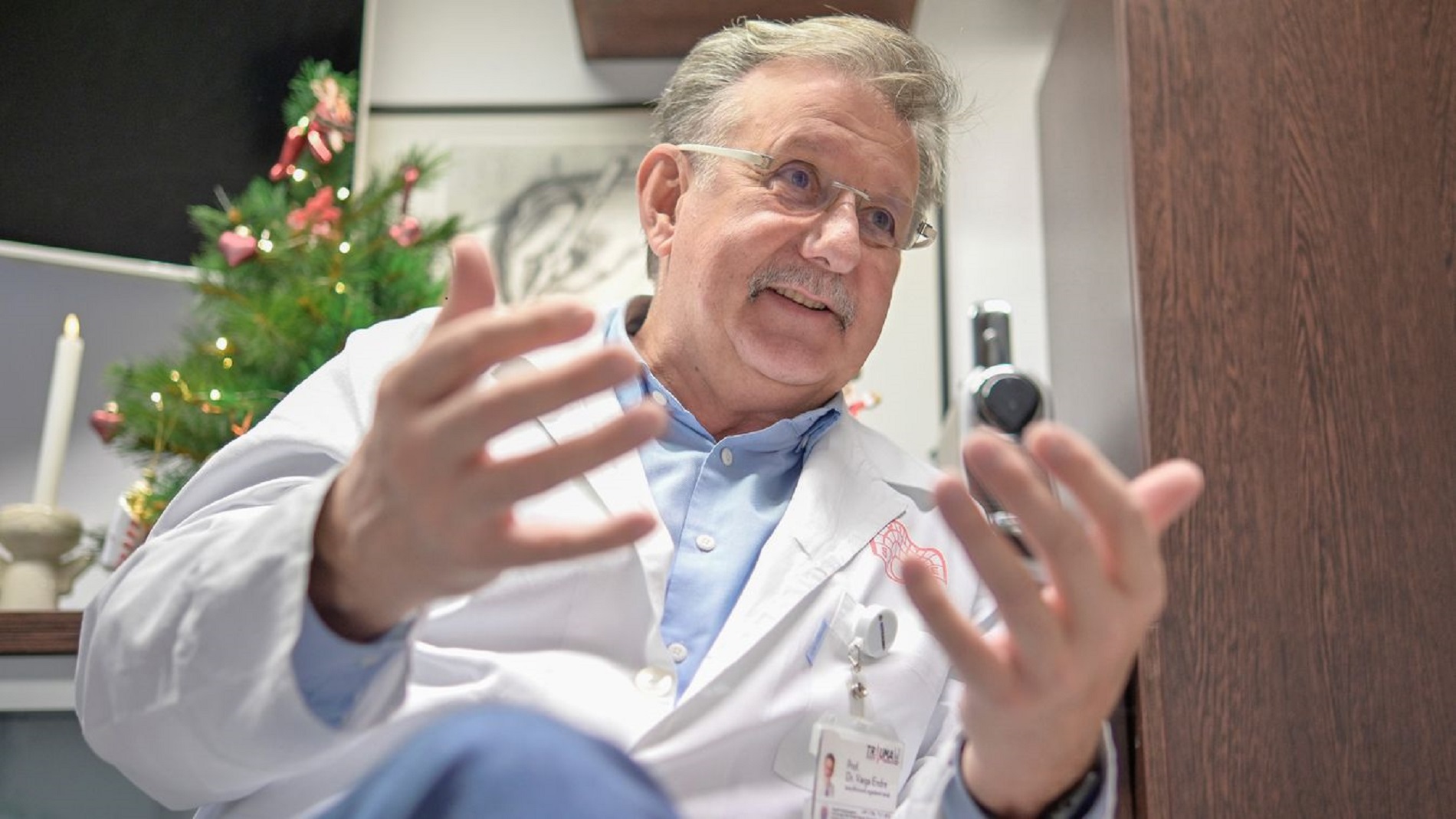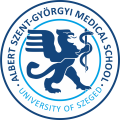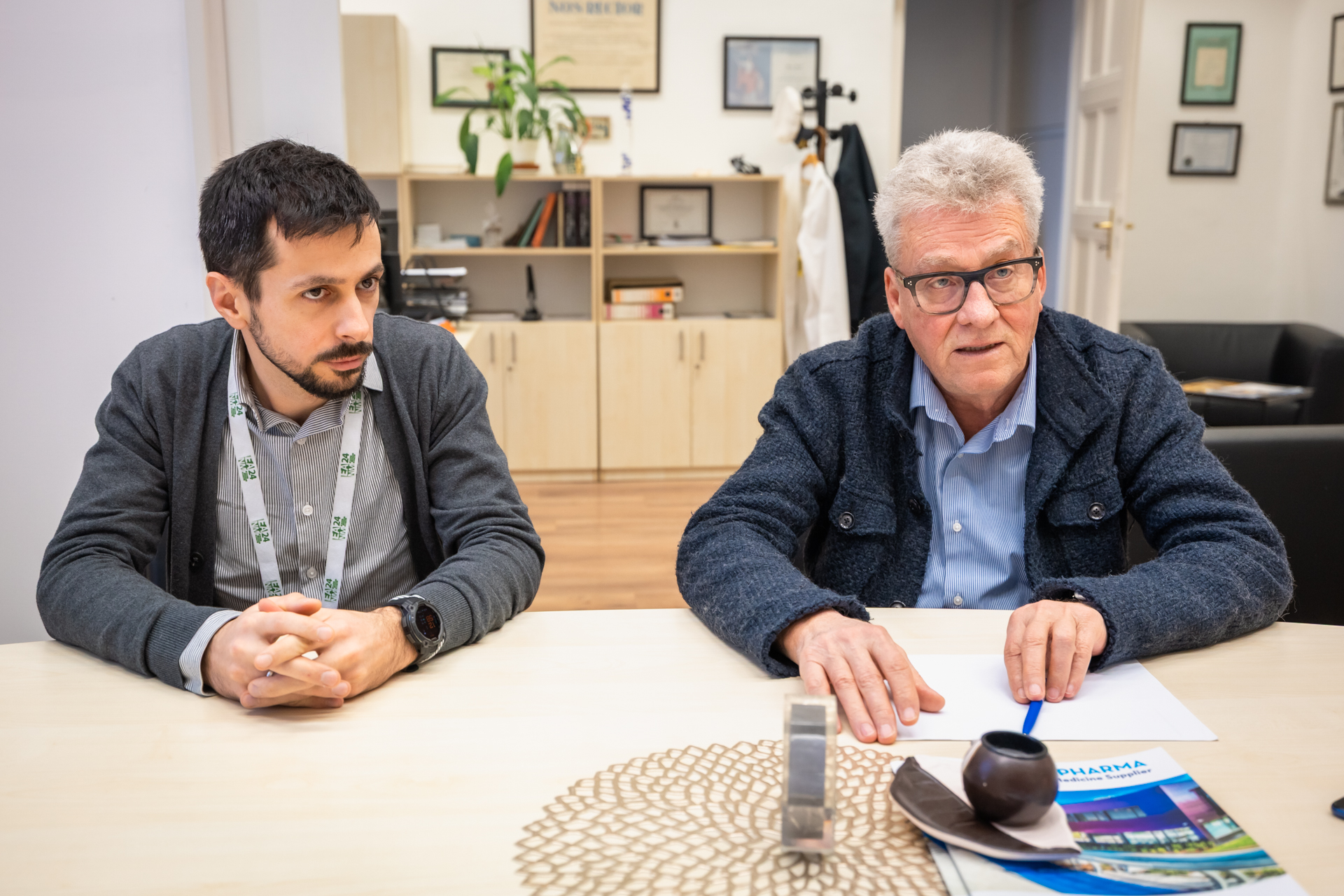University of Szeged
Albert Szent-Györgyi Medical School
Foreign Students' Secretariat
Your Education. Our Mission.

Novel robotic surgical device tested at SZTE
The University of Szeged has reached a new milestone: a new precision robotic surgical device has been tested at the Department of Traumatology and Orthopaedic Surgery at the Albert Szent-Györgyi Medical School, which could revolutionise the accuracy and safety of knee replacement surgery.
The innovative device could radically change not only patient care, but also surgical training, enhancing the university's international reputation. We spoke to Dr Endre Varga, traumatologist and professor at the University of Szeged, about the innovative procedure.
As the professor explained, the so-called high-tech procedures have been used in modern musculoskeletal surgery for more than 20 years. For example, navigation surgery, which is not performed with the help of X-rays, but with the assistance of infrared-based optical navigation systems using cameras and computer systems. "Its working principle is similar to GPS navigation on a mobile phone: you have an up-to-date „anatomical map” of the patient, which you can follow in real time with the help of infrared cameras.
Another approach besides navigation is the use of 3D-printed instruments, which are particularly useful in bone surgery. In this case, customised, 3D-printed patient-specific instrumentation is used for the surgery, which precisely guides surgical tools, such as drills. This procedure is becoming increasingly common around the world, particularly for hip joint and bone resection surgery, but is also common in dentistry and prosthetics.
The next stage is robotics, which has several versions. The one which was tested in Szeged in December is a system where the surgeon operates and moves the device, but the robot ensures that the device only works within a specified area. "This system first makes a map before the operation, for example of the knee joint, and then the device in the surgeon's hand is continuously monitored by infrared cameras. The device follows the map and the system does not allow the surgeon to inadvertently overstep the defined boundaries. So this technology makes the surgical work much more precise.”

An improved version of robotic technology now uses fully automated levers, similar to systems used in the automotive industry. In these, subtle movements are controlled by artificial intelligence to ensure that no mistakes are made. While artificial intelligence is a very divisive issue, it is important to remember that these tools are designed to assist the doctor's work, not replace it. The doctor remains in charge of the surgery, but robots can significantly increase safety and accuracy, and make surgeons' work easier during a complex procedure.
This technology is spreading rapidly worldwide, particularly in knee and shoulder replacement. In Australia, for example, around 30 percent of knee operations are now performed this way, and the rate is similar in the United States. "In Hungary, at the moment, only a few private institutions are using this technology; however, the management of our university is committed to making it available at SZTE. This would not only improve the quality of care, but would also be a pioneering step in the country, as currently there is no such technology in the Hungarian public health care system. Several of our colleagues have already studied these procedures abroad, in countries such as Australia and Poland, and we hope to introduce them more widely soon".
We are trying out different systems to choose the most appropriate one. The system we tested now is not only capable of more accurate insertion of the prosthesis, but also of more accurate assessment of the pressure in the knee joint. This is particularly important, as statistics show that satisfaction after knee replacement surgery is around 80 percent worldwide, which means that 20 percent of patients still have problems after the procedure. These problems may not only be caused by inaccurate insertion of the prosthesis, but often the soft tissue around the knee is not tight enough. Modern robotic surgical techniques can assess this soft tissue balance more closely and optimise the prosthesis insertion accordingly. This leads us to expect that the current 20 per cent dissatisfaction rate will be reduced.

In the future, the technology will be used both in education and training. Such systems are already making the planning process much more prudent and precise, which will significantly improve the quality of surgery. Navigation technology and surgical planning have been used at the Department of Traumatology for many years, and there has been extensive research conducted on the subject.
Retraining will be essential for practising surgeons to learn how to use this new technology. According to professional recommendations, the learning process consists of several steps. The first 10-15 surgeries should be performed supervised by an experienced surgeon who has considerable experience in this field. Independent work is only possible if the surgeon passes an examination and demonstrates the ability to perform the procedure safely and accurately. This process takes several months.
However, in a university setting, it is also particularly important that surgeons not only learn new techniques, but can also teach them at an international level. "This is essential not only for professional development, but also because at our university we offer not only undergraduate training to foreign students, but also postgraduate training. It is therefore important to prepare future generations, including foreign professionals, to these modern techniques.






